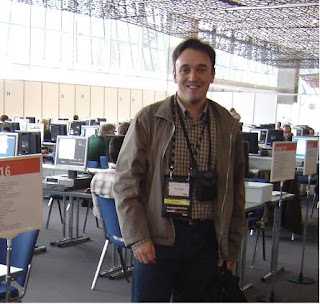The last couple of weeks were full of events. Although I dind’t attended any of them in person, I could get some of their essence online, in between work (or after it).
The first event was PDC2010. Even though it has always been an american and the main MS developer event, this year the keynote was broadcasted live throughout the world. I attended at the MS auditory in TagusPark (Portugal), and the keynote main themes were:
Azure (PaaS, Market place, VM role, Server App Virtualization, SQL Azure reporting, Application Fabric and composition, TFS, extra small instances)
IE9 (HTML5, hardware acceleration, pinned sites)
WP7 (many demos, developer tools, and a WP7 phone for every PDC 2010 attendee!)
But besides all the clouds, demos and TLAs (or Four LAs), the main reason I had to watch PDC sessions was the future of C#. And even though the keynote didn’t have any hints on this regard, the sessions with Hejlsberg (FT09) and with Bart De Smet (FT10) were very good.
So as the theme in C# 4 was Dynamic, the theme in C# Next will be Asynchronous Programming, keeping with the trend of Declarative and Concurrent. The presentation demoed the async modifier and the await operator, resulting in an easier model of composition of asynchronous methods.
It was a bit disapointing seeing that “Compiler as a Service”, is in the makes, but apparently only for an even future version. So all the possibilities of architectural refactoring, DSL embeding, and meta-programming won’t be possible in the near future.
The presentation on Linq to everything (FT10) was very good, focusing on some advanced and possible uses of Linq, Providers, Rx and the dual of IQueryable ~ IQbservable.
The other event (of relevance to me) was the PASS Summit 2010, also available through live streaming. As it occurred during work hours, I had to watch it with interruptions, but from what I saw, the main announcements were:
SQL Server 11(?) – Denali CTP (column based query accelerator, round-trip refactoring, deployment improvements, sequences, paging, FileTable – WinFS back?, Full-Text Search improvements)
SQL 2008 R2 Parallel DataWarehouse
MS Atlanta (cloud service for configuration problems and other issues)
MCM for SQL Server changes (the program will be avaible worldwide outside Redmond, more affordable, and the training will be available through SQL Skills, with many training videos available for free)



